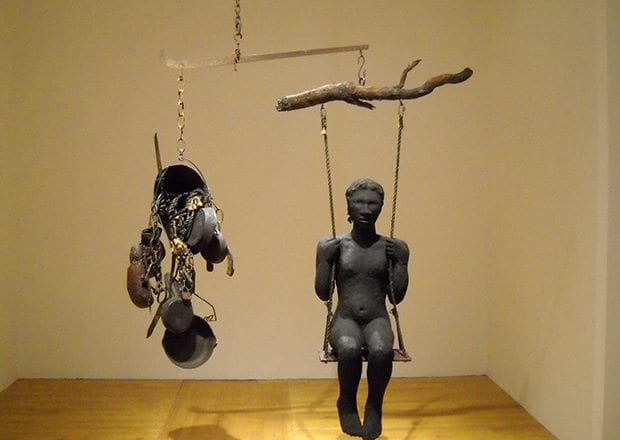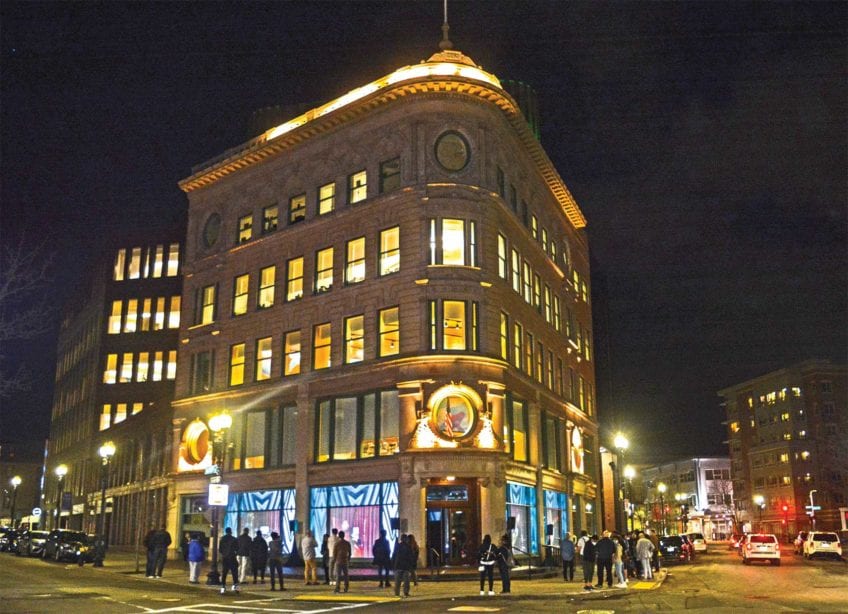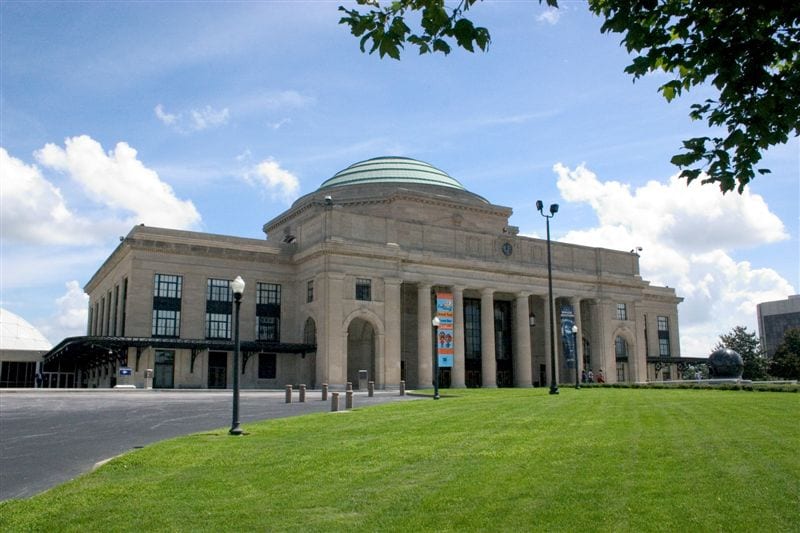
“The beauty of art is the ambiguity,” says sculptor Alison Saar discussing her current exhibit “STILL…” showing at the Sandra and David Bakalar Gallery at the Massachusetts College of Art and Design.
Using such mediums as wood, bronze, paper and glass in her installations, Saar’s work often explores and challenges the themes of race and identity, the female form, and spiritually and stereotypes. Saar’s own personal struggle with her mixed heritage and her interest in American and African artistic and spiritual traditions often informs her work. Examples of these themes are explored in her recent installations such as “50 Proof,” “Black Lightning,” “Rouse” and “Weight.”
In “Weight,” we see a young black girl on a swing dangling from a cotton scale opposite a coal scuttle with objects such as an iron, ladle, horseshoe, shackle, shovel, hot comb, boxing gloves and skillet. Of the piece, Saar states: “I started thinking of it as a kind of cornucopia, about [the girl’s] opportunities, and what her value is … as a slave or as a domestic. She can be a hairdresser. She can work in the field. She can be a seamstress, a cook.” Of the tattered pair of boxing gloves that are part of the piece, Saar explains that the young girl “has to fight her way out.”
Born into a prominent art family in Los Angeles in 1956 and the middle of three daughters, Saar followed in the pathway of her artist mother Betye Saar, whose work is widely known for challenging African American myths and stereotypes through assembling images of Aunt Jemima, Uncle Tom, Little Black Sambo, and other stereotyped African-American figures from folk culture. Her father Richard Saar is an art conservationist and her older sister Lezley became reknowned as an artist for transforming old books into assemblages. Her younger sister Tracye is a writer and author of “Family Legacies: The Art of Betye, Lezley and Alison Saar.”

Alison Saar comes from a prominent art family in California. Her father, mother and two sisters are all involved in the arts. Her father is German Scottish and her mother is African American and Irish.
Saar graduated from Scripps College in 1978 in Claremont, Calif., and received a master’s degree in fine arts from Otis College of Art and Design in 1981. Her work is held in many collections around the country including the Museum of Modern Art and Metropolitan Museum of Art in New York and the Hirshhorn Museum and Sculpture Garden in Washington, D.C. She has received numerous prestigious awards and grants from the Guggenheim Memorial Foundation, the National Endowment for the Arts and Anonymous Was a Woman.
Saar’s exhibit “STILL…” gathers together for the first time four never-exhibited works made during a residency at the Pilchuck Glass School in Seattle with a selection of new bronze and mixed-media sculptures. The exhibit was organized by Otis College of Art and Design’s Ben Maltz Gallery and funded in part by Contemporary Collectors Orange County.
Saar spoke to the Banner from her home in Laurel Canyon, Calif., about her influences and her “STILL…” exhibit
How did having a mixed racial upbringing inform your work?
My dad is German Scottish and my mother is African American and Irish. LA is divided by colors of people. It was hard for me to find a place where I belonged. I felt I was living two very different lives. It’s a real concern of mine — how we’re categorized by the color of our skin.
When you’re creating your sculptures do you find that it’s more of a conscious effort or is it subliminal?
I always have a specific work in mind. I’m very conscious of what I’m creating. In the process of making the art there are subliminal images that manifest that are not always conscious.
In the introduction of “STILL…,” Meg Linton writes that she has been working with you the last two years on this exhibition. Did she commission your work for Otis College of Art’s Ben Maltz Gallery? How does it work between the artist and the gallery?
There’s a difference between a commercial space and a gallery like Otis. Meg Linton really gives the artist full reign. The Otis gallery has very high ceilings and it’s an exciting space to come up with ideas. It’s an opportunity for the artist to explore the work. You can make big, unwieldy things. It’s an opportunity to take some risks and you’re encouraged by the gallery to do so.
How do you name your sculptures?
I’m a huge fan of the thesaurus and I’m interested in punning, wordplay. Part of it is the African American tradition of slangs, playing with words. Word plays as in the blues traditions. All the work is a little dark and heavy and I try to add some levity to it.
Who or what has been an influence on your work?
Of course my parents and my mentor Dr. Samella Lewis. She was an instructor at Smith and she broadened my horizons.
In what way did she help to broaden your art and the way that you think about your work?
I studied African Art history as well as the art of the African diaspora with Dr. Lewis. She was also my advisor for my thesis on self-taught African American artists. Although I didn’t pursue a career in art, I feel these studies have a huge influence on my work as an artist.
Was there a moment growing when you knew that you wanted to be an artist?
It was something I always did growing up; being dragged around to installations. My mother was widely known. It was daunting. Initially, I was interested in being an art historian but when I was getting my B.A. I realized that I wanted to make art instead of reading about art.
Do you consider your work political?
In the ‘80s I was invited to be part of an exhibit called “Art & Politics.” I never considered my work as political. It’s always been very personal. Sometimes, it’s a direct response to what’s going on in the media and in the world.
You talked about working with glass and the idea of “distilling down to an essence.” Can you describe in more detail your experience working with glass during your residency at Pilchuck Glass School?
Pilchuck invites artists without prior knowledge of glassmaking to come and explore the material with the help of skilled glass artists to create works in a variety of techniques. I was working with two gaffers in the hot shop. For some pieces I would draw an image of what I wanted and we would work together to get the right shape. For others I made molds of pieces, into which the glass was blown.
Does being a mother influence your work, and if so in what way?
I feel the work shifted when I had children in that I began to make the work more personal. I was also more interested in how motherhood has affected our lives as women and women of color, both historically and in the present.
Do you have any thoughts on how to expose kids to art, to make it more understandable?
Taking kids when they’re really young and very often.
Is your work influenced by film, television or pop culture in any way?
Film has always been important to me. My husband is a filmmaker. Reading. When you’re reading you’re present. The mind allows you to be fully there.
What do you hope that people take away from the exhibit, if anything?
Hopefully, calling people to arms and having their voices heard.
The Massachusetts College of Art and Design’s Bakalar & Paine Galleries presents Alison Saar’s exhibit “STILL…” now through March 8. The galleries are free and open to the public Monday through Saturday, 12 p.m. to 6 p.m. and Wednesdays 12 p.m. to 8 p.m. The galleries are closed on Sundays. For more information, please email galleryinfo@massart.edu or call 617-879-7333.






